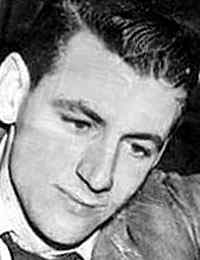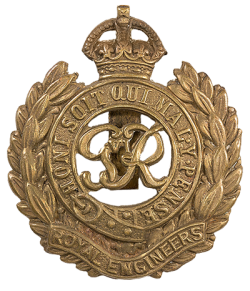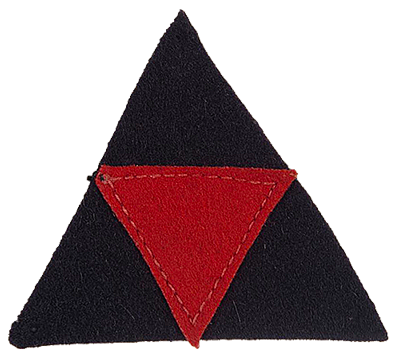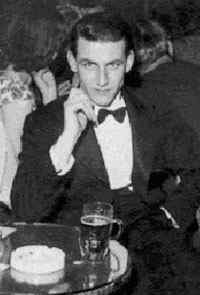Poh! My word! It's all such a long time ago now, but for many of us, the memories remain as though it were yesterday. Before recalling these memoirs it is vitally important to set the scene in which the following events took place, to do this, just for a minute lets recall what we were doing at this time, 57 years ago.
We had left D. Day and the conquest of Normandy far behind us. The saga of the Airborne at Arnhem (the bridge too far) was also behind us. We were now battering at the gates of the German homeland, on the Dutch side of the border in the Limburg area, and now had to set about breaking his hold on the vital Dutch/German border areas. What follows, is a recollection of one of the hardest fought, blood-thirsty, and sometimes, for us, very peculiar episodes of the war in North West Europe.
The American 7th Armoured Division took a real pasting trying to take the towns of Overloon and Venraij, then retired to the South, never to be seen again, afterwards, Third British Infantry Division had to go in and take these towns where the Americans had failed. The resulting battles were blood thirsty in the extreme, tremendous shell and mortar fire, coupled with heavy small arms and machine gun fire on both sides, and, as usual Eighth Brigade with my company up, had to lead off, Eighth Brigade led off the attack by tradition, from D Day onwards. Many who served at Overloon and Venraij will never forget that miserable, wet and very dangerous soggy place!
This battle took place in driving rain amongst the muddy and sandy tracks that wandered through the dense conifer woods and over the Molen Beek, this little stream that had been mined on the banks and even under the water, and at the same time was under heavy shell and mortar fire. This was a place of ill repute, a battle where no quarter was asked, or given. Sometimes, sadly in this battle, losing whole groups of men blown to pieces. During this ferocious fighting, our guns at Oploo made the ground tremble beneath our feet. But! By about the 18th of October. Overloon and Venraij lay safely in our hands, taken against fierce resistance. While this ferocious battle was going on we had to deal with another problem, that was the discovery of new mines that we had not found before. We called Rigler mines. They were long rectangular mines, coloured light brown, I do not know why?
Under heavy fire we cleared them by the thousands, not knowing what to do with them, they were stacked up in ditches and sometimes on top the ground, criss-crossed in stacks. With an officer, on a motor bike, I made my way down from our battle area to where they were clearing the thickest of these mines, on the way we had to run over a dead German who was laying in the deep rutted sand tracks, could not avoid him, the sand ruts were very deep, when we got there the officer told one of the men to take a mine off and away from the rest, and see if it was booby trapped. We had turned round and on our way back to our own area of the fighting, when, from behind us, came a gigantic explosion, we yanked the bike around and went back, but the whole area was devastated, swept clean of all life. All those that were present had disappeared.
Sadly, as happens in these circumstances, we put wooden crosses there in the knowledge that later, when they were to be buried in a proper place there would be nothing for the burial squad to find. That is sad, and upsetting, even now! It is in that atmosphere that the following events happened.
During this battle we had to deal with a quarter of a million mines, mines of every description, the worst of these was the "Schu" mine, you may remember, this was made of wood and could not be detected, these mines were causing a continuous stream of casualties, the injuries inflicted, caused a man to lose his legs, or the best part of them, and very often what was worse, his ability to father children in the future. We had to put a stop to this carnage of our young men. The accepted way to find these mines was to crawl along on hands and knees prodding the ground in front with bayonets. Under heavy fire, an unpleasant task, coupled with the loss of those of us, who unfortunately, prodded them in the wrong place and paid with our lives. How to counter this carnage?
Then someone came up with the idea that we would get hold of an ordinary garden roller. I know! I know! At this point I can hear you thinking? Here it comes, swing the lamps! what a load of rubbish! But! I must tell you, it ss absolutely true. To get back to my story, we got hold of this garden roller and welded spikes around the roller barrel, then a soldier would push this roller in front of him, so that when the roller went over a schu mine, it would blow up, the garden roller would fly up in the air on its specially elongated handle, and then drop down again. To protect the soldier he had a cut down gas mask over his eyes with long gauntlet gloves and a woven rope protector strapped round his groin. Now dear reader! Just try to imagine, a full scale, ferocious war going on, with heavy artillery and mortar fire and in the middle of it all, a lonely soldier pushing a garden roller across the battle field, and not to much of a hurry at that, in case he went to quickly and missed detonating the mine.
What a load of complete rubbish! You may say, and it certainly sounds just that. Rubbish. Apart from the fact that I was one of those lonely soldiers who pushed this bloody contraption in front of him, much to his friend's delight. And I might add, this was demonstrated in front of Field Marshall Montgomery's second in command, Air Vice Marshall Tedder. The outcome of all this was, a short entry in the companies war diaries, stating simply: "the garden roller experiment was a washout". In fact, it worked surprisingly well, but could not cope with uneven ground. What is most satisfying for me, is that I have the companies war diaries with the entry for the garden roller. The diaries cost £76 from the records office, but worth every penny to prove my story.
The Flowers of Normandy
On Norman soil, they fought and died.
Now young men's graves in rows abound.
In Mother Earth's arms, now sanctified,
The fragrant flowers of our youth are found.
And yet, to rise again, as in a distant song.
Small voices that call, in dead of night.
Fleeting figures only in our dreams belong.
Alas, they fade, in dawn's bright light.
I see them yet, a sad, forgotten throng.
Shadowed, lost faces, marching on.
Over dusty roads, and high golden corn.
The call of long lost friends are borne.
We must not forget, the flowers of our days,
Lest they lay unquiet, in numbered graves.
For we lived, and loved, and life was sweet.
Still yet, for us, awaits our last retreat.
Flowers of our youth, now long since past.
Our sweet autumn days are fading fast.
We, who are left, flowered in our prime.
Enjoyed golden moments, on borrowed time.
Remember our friends, who passed this way.
For all our tomorrow's, they gave their today's,
On Utah and Omaha, Juno, Sword and Gold.
Oh! Dear Lord! See that they grow not old.
Brian Guy






